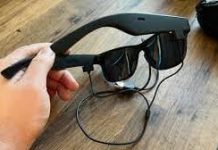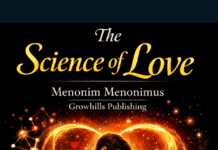“Dive into the captivating journey of Saturn exploration, from Pioneer 11’s first flyby to the groundbreaking discoveries of the Cassini-Huygens mission.”
The History of Saturn Exploration
Saturn is one of the most intriguing and captivating planets in our solar system. For centuries, humans have been fascinated by this massive gas giant and have sought to understand its secrets. The history of Saturn exploration is a rich and varied one, filled with incredible achievements, heart-breaking setbacks, and relentless pursuit of knowledge. This essay will examine the history of Saturn exploration and the technological and scientific advancements that have enabled us to better understand this magnificent planet.
The first observations of Saturn were made by Galileo Galilei in 1610 using a simple telescope. He was able to see Saturn’s distinctive rings and two of its largest moons, Titan and Iapetus. Over the next few centuries, astronomers continued to observe Saturn and make new discoveries, but it wasn’t until the 20th century that we were able to get a more in-depth look at the planet and its moons.
One of the first major milestones in Saturn exploration was the launch of the Pioneer 11 spacecraft in 1973. Pioneer 11 was the first spacecraft to fly by Saturn and gather close-up images and data about the planet and its moons. It discovered Saturn’s magnetic field and confirmed the presence of a significant amount of methane in its atmosphere.
In 1979, NASA’s Voyager 1 and Voyager 2 spacecraft were launched to explore the outer solar system.
Both spacecraft flew by Saturn and revolutionized our understanding of the planet. Voyager 1 discovered Saturn’s massive moon, Titan, and its thick atmosphere, while Voyager 2 provided the first close-up images of several of Saturn’s moons, including Enceladus and Tethys. These missions also discovered the intricate structure of Saturn’s rings and confirmed that they were made up of ice particles.
Following the success of the Voyager missions, NASA launched the Cassini spacecraft in 1997 for Saturn Exploration. Cassini was designed to conduct an in-depth study of Saturn and its moons, and it spent 13 years orbiting the planet and sending back a wealth of data and images. Cassini discovered geysers of water vapor erupting from the surface of Enceladus, which strongly hinted at the presence of a subsurface ocean, and it also discovered multiple lakes and seas of liquid methane on Titan. Cassini also provided new insights into Saturn’s ring system and its dynamic weather patterns.
The most recent Saturn exploration is the Mars Reconnaissance Orbiter (MRO), which has been in orbit around the planet since 2015. MRO has continued to make discoveries about Saturn and its moons, including evidence of massive ice volcanoes on Enceladus and the discovery of new moonlets within Saturn’s rings. MRO has also provided new data on Saturn’s atmosphere, including observations of its weather patterns and the distribution of its cloud cover.
In conclusion, the history of Saturn exploration has been one of persistent effort, technological innovation, and scientific discovery. Over the past few centuries, we have learned an incredible amount about this magnificent planet and its fascinating moons. From the first observations of Saturn’s rings by Galileo to the latest discoveries made by the Mars Reconnaissance Orbiter, humans have been relentless in their pursuit of knowledge about this distant world. And with new missions being planned, we can be sure that the history of Saturn exploration will continue to be written for many years to come. 0 0 0.
The History of Saturn Exploration: Facts in Brief
- Pioneer 11: The first spacecraft to visit Saturn was NASA’s Pioneer 11, which flew by the planet in September 1979. It provided the first close-up images of Saturn and discovered the thin F-ring.
- Voyager 1 and 2: These twin spacecraft conducted flybys of Saturn in 1980 and 1981, respectively. They sent back high-resolution images of Saturn, its rings, and moons. Voyager 1’s close approach to Titan revealed its thick atmosphere, while Voyager 2 provided detailed data on Saturn’s temperature and density profiles.
- Cassini-Huygens Mission: Launched in 1997, the Cassini spacecraft arrived at Saturn in 2004 and orbited the planet until 2017. It conducted extensive studies of Saturn, its rings, and its moons. The Huygens probe, part of the mission, descended to Titan’s surface in 2005, providing unprecedented data on its atmosphere and surface.
- Huygens Probe: As part of the Cassini mission, the Huygens probe landed on Titan in January 2005. It was the first landing on a moon other than Earth’s and provided detailed information about Titan’s atmosphere and surface conditions.
- Future Missions: While there are no current missions specifically targeting Saturn, future explorations may focus on its intriguing moons, such as Titan and Enceladus, which are of particular interest due to their potential for harboring life. 0 0 0
The History of Saturn Exploration: FAQs
- What was the first spacecraft to visit Saturn?
- Pioneer 11 was the first spacecraft to visit Saturn, making its flyby in September 1979. It provided the first close-up images of Saturn and discovered the thin F-ring.
- What significant discoveries did the Voyager missions make about Saturn?
- Voyager 1 and 2 conducted flybys of Saturn in 1980 and 1981, respectively. They sent back high-resolution images of Saturn, its rings, and moons. Voyager 1’s close approach to Titan revealed its thick atmosphere, while Voyager 2 provided detailed data on Saturn’s temperature and density profiles.
- What was the Cassini-Huygens mission, and what did it achieve?
- The Cassini-Huygens mission was a collaboration between NASA, ESA, and ASI. Launched in 1997, Cassini arrived at Saturn in 2004 and orbited the planet until 2017. It conducted extensive studies of Saturn, its rings, and its moons. The Huygens probe, part of the mission, descended to Titan’s surface in 2005, providing unprecedented data on its atmosphere and surface.
- What did the Huygens probe discover about Titan?
- The Huygens probe landed on Titan in January 2005, marking the first landing on a moon other than Earth’s. It provided detailed information about Titan’s atmosphere and surface conditions, revealing a landscape with river channels, lakes, and possible cryovolcanoes.
- What are some of the key findings from the Cassini mission?
- The Cassini mission made numerous discoveries, including:
- Detailed images and data on Saturn’s rings and their dynamic behavior.
- Evidence of hydrothermal activity on Enceladus, suggesting a subsurface ocean.
- Observations of seasonal changes on Titan and Saturn.
- Detailed mapping of Titan’s surface and atmosphere.
- The Cassini mission made numerous discoveries, including:
- What future missions are planned for Saturn exploration?
- While there are no current missions specifically targeting Saturn, future explorations may focus on its intriguing moons, such as Titan and Enceladus, which are of particular interest due to their potential for harboring life.
- How did the Pioneer 11 mission contribute to our understanding of Saturn?
- Pioneer 11 provided the first close-up images of Saturn and discovered the thin F-ring. It also measured the temperature of Titan and provided data on Saturn’s magnetosphere.
- What challenges do spacecraft face when exploring Saturn?
- Challenges include the vast distance from Earth, which makes communication and navigation difficult, and Saturn’s intense radiation belts and strong magnetic field, which can affect spacecraft instruments.
- Why is Titan considered a key target for exploration?
- Titan is considered a key target because of its thick atmosphere and surface liquid lakes and rivers of methane and ethane. Its potential for prebiotic chemistry makes it a prime candidate for the search for extraterrestrial life.
- What role did the Voyager missions play in the exploration of Saturn’s moons?
- The Voyager missions provided the first high-resolution images of Saturn’s moons, revealing surface features and geological activity. They discovered new moons and gaps in Saturn’s rings, significantly enhancing our understanding of the Saturnian system.
N.B. The article ‘The History of Saturn Exploration’ originally belongs to the book ‘Essays on Science And Technology‘ by Menonim Menonimus.
Books of Composition by M. Menonimus:
- Advertisement Writing
- Amplification Writing
- Note Making
- Paragraph Writing
- Notice Writing
- Passage Comprehension
- The Art of Poster Writing
- The Art of Letter Writing
- Report Writing
- Story Writing
- Substance Writing
- School Essays Part-I
- School Essays Part-II
- School English Grammar Part-I
- School English Grammar Part-II..
Related Search:
- Saturn-NASA Solar System Exploration
- History of Saturn
- Mars Exploration
- The History of Mars Exploration
- Artificial Intelligence Essay











